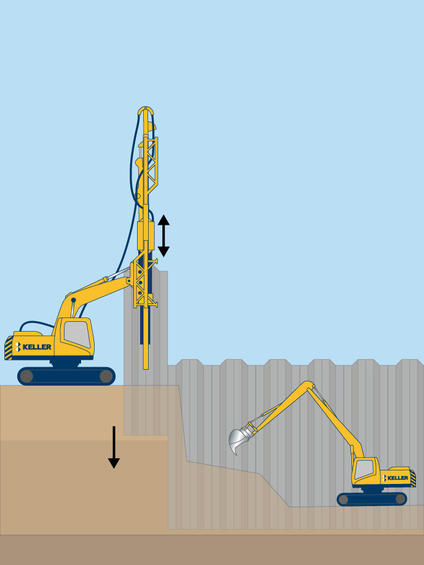Sheet piling retains soil, using steel sheets with interlocking edges and is applied using both vibratory and vibration-free installation rigs.

Common uses
Process
Sheet piles are installed in sequence to design depth along the planned excavation perimeter or seawall alignment. The interlocked sheet piles form a wall for permanent or temporary lateral earth support with reduced groundwater inflow. Anchors or internal bracing can be included to provide additional lateral support if required.
Cold rolled sheet piling provides less water resistance but may be more cost effective and available. Hot rolled sheet piling is more traditional and provides better water resistance. Interlock sealant can be added to all forms of sheet piling to reduce permeability.
Advantages
Quality assurance
Keller has a fleet of modern, safe rigs available to perform sheet pile installations of all kinds in all environments. In-house design allows us to customise a cost-effective solution for each project and decades of experience allow us to avoid pitfalls in design and installation.